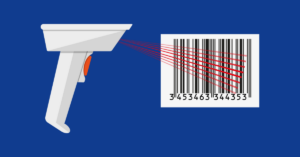Every business faces a delicate balancing act regardless of size or industry. On one side, you need to meet customer demands promptly, ensuring that your shelves are well-stocked, and orders are fulfilled without a hitch. Conversely, you must manage your resources wisely, avoid overstocking, prevent theft or pilferage, and closely monitor your financial health. This is where stock-taking becomes the tightrope that businesses walk.
Stock-taking is physically verifying and counting the items or products you have on hand. And while it might sound straightforward, the implications are profound. Stock-taking can be the difference between success and chaos.
What is Stock-Taking?
Stock-taking, also known as inventory counting or inventory audit, is physically counting and verifying the quantity and condition of items in a business’s inventory. It is a critical checkpoint to ensure that the recorded inventory levels match the physical inventory.
Why is Inventory Counting Important for a Business?
The importance of inventory counting cannot be overstated. It plays a pivotal role in the overall health and efficiency of a business for several reasons:
1. Preventing Stockouts and Overstocking:
Knowing the exact quantity of each product in stock helps prevent stockouts (running out of popular items) and overstocking (holding excess inventory, tying up capital).
2. Security and Theft Prevention:
Regular inventory counts can uncover discrepancies that may indicate theft or pilferage. This can be crucial for security and loss prevention efforts.
3. Operational Efficiency and Customer Satisfaction:
Accurate inventory data streamlines daily operations. Employees can confidently fulfill orders, manage reordering, and track inventory movements. Timely and accurate order fulfillment depends on knowing what inventory is available. Accurate counts help ensure that customers receive their orders on time and as expected.
4. Financial Decision-Making:
Inventory counts provide insights into product sales trends, slow-moving items, and the potential for obsolescence. This data informs purchasing decisions, pricing strategies, and overall business strategy.
5. Cost of Goods Sold (COGS) Calculation:
A business needs precise inventory counts to calculate the COGS. COGS is a critical expense item on the income statement and affects gross profit calculation.
6. Year-End Reporting:
Many businesses perform stock-taking at year-end to prepare for financial reporting. Accurate counts are essential for closing the books and producing accurate financial statements.
7. Tax Compliance:
Accurate inventory records are necessary for tax compliance. Many tax authorities require businesses to report their inventory values, impacting tax liabilities.
Related: Retail Operations: What They Are, Their Common Challenges, And How To Overcome Them
How Frequently Should a Business Perform Inventory Counting?
The frequency of inventory counting varies depending on factors like the business size, the industry it operates in, and the specific inventory management needs. Common approaches include:
| Frequency | Description |
| Annual or Year-End Count | Many businesses conduct a comprehensive inventory count once a year, typically at the end of their fiscal year, for financial reporting and tax purposes. |
| Quarterly or Semi-Annual Count | Some businesses, especially those with larger or more complex inventories, may opt for more frequent counts, such as quarterly or semi-annual audits. |
| Monthly Count | Businesses with rapidly changing inventories, such as retailers with seasonal products, may choose to perform monthly inventory counts to maintain tight control over inventory levels. |
| Continuous or Real-Time Count: | Advanced technology like barcode scanners or RFID systems allows some businesses to conduct continuous or real-time inventory counts. |
| Cycle Counting: | Cycle counting divides the inventory into smaller segments or categories, with each segment counted regularly on a rotating basis. It’s suitable for businesses with large inventories. |
How Does a Business Perform Stock-taking?
Inventory counting involves a series of steps to accurately determine the quantity and value of items in a business’s inventory. Here’s a general overview of how it’s done:
1. Preparing for the Count:
- Planning: Define the scope of the inventory count, assemble a counting team, and gather necessary documentation.
- Assembling a Team: Assign a team responsible for the inventory count and ensure they are trained on the counting process.
- Documentation: Gather all necessary inventory records and ensure the inventory area is organized and well-lit.
2. Choosing a Counting Method:
- Physical Counts: Physically count each item or product in the inventory.
- Cycle Counting: Divide the inventory into smaller segments and count a portion regularly.
- Technology-Assisted Counts: Use tools like barcode scanners, RFID systems, or inventory management software.
3. Conducting the Count:
- Counting Team: Assign the counting team to specific areas or sections of the inventory.
- Accuracy: Encourage accuracy by having multiple team members count the same items independently and cross-check their counts.
- Recording: Record the counted quantities for each item.
4. Reconciliation:
- Comparing Counts: Compare physical counts with recorded inventory levels to identify discrepancies.
- Investigation: Investigate the root causes of discrepancies and make necessary adjustments to inventory records.
5. Reporting:
- Documentation: Maintain comprehensive records of the inventory count, including adjustments made, discrepancies identified, and the names of team members involved.
6. Post-Count Procedures:
- Updating Records: Update inventory records to reflect the accurate count.
- Analysis: Analyze the inventory count results to identify trends, such as slow-moving items or discrepancies in certain product categories.
How Vencru Can Help You Perform Inventory Counting
Performing stock-taking manually can be time-consuming and prone to errors. That’s where inventory management software like Vencru comes to the rescue. Here’s how Vencru can simplify your inventory counting process:
- Real-Time Inventory Updates: Vencru provides real-time updates on inventory quantities as products are bought, sold, or moved. This reduces the need for frequent manual counts.
- Barcode Scanning: Vencru supports barcode scanning, allowing you to scan product barcodes using a mobile device or barcode scanner. This speeds up the counting process and minimizes errors.
- Inventory Alerts: Vencru can send alerts when inventory levels reach specified thresholds, ensuring timely reordering and issue prevention.
- Integration with Sales and Purchases: Vencru integrates inventory data with sales and purchase records, automatically updating inventory levels.
- Inventory Reports: Vencru provides a range of inventory reports, including stock on hand, stock movements, and product profitability, offering insights into inventory performance.
- Inventory Valuation: Vencru calculates inventory value using various methods, ensuring accurate representation for financial reporting.
- User-Friendly Interface: Vencru features an intuitive interface that simplifies inventory counting tasks, allowing staff to perform counts efficiently.
Inventory counting is not merely a routine task; it’s a linchpin that holds your business’s financial accuracy and operational efficiency together. Neglecting it can lead to financial discrepancies, stockouts, overstocking, and missed opportunities.
With the right approach and tools like Vencru, inventory counting can become a streamlined and efficient process, empowering your business to make informed decisions, reduce costs, and serve your customers better. So, take that tightrope walk with confidence—stock-taking is your key to business success.
Ready to explore Vencru? Get started here or book a demo
Disclaimer: This article is for informational purposes only and does not constitute financial or legal advice. Please consult with a qualified professional for personalized guidance.








